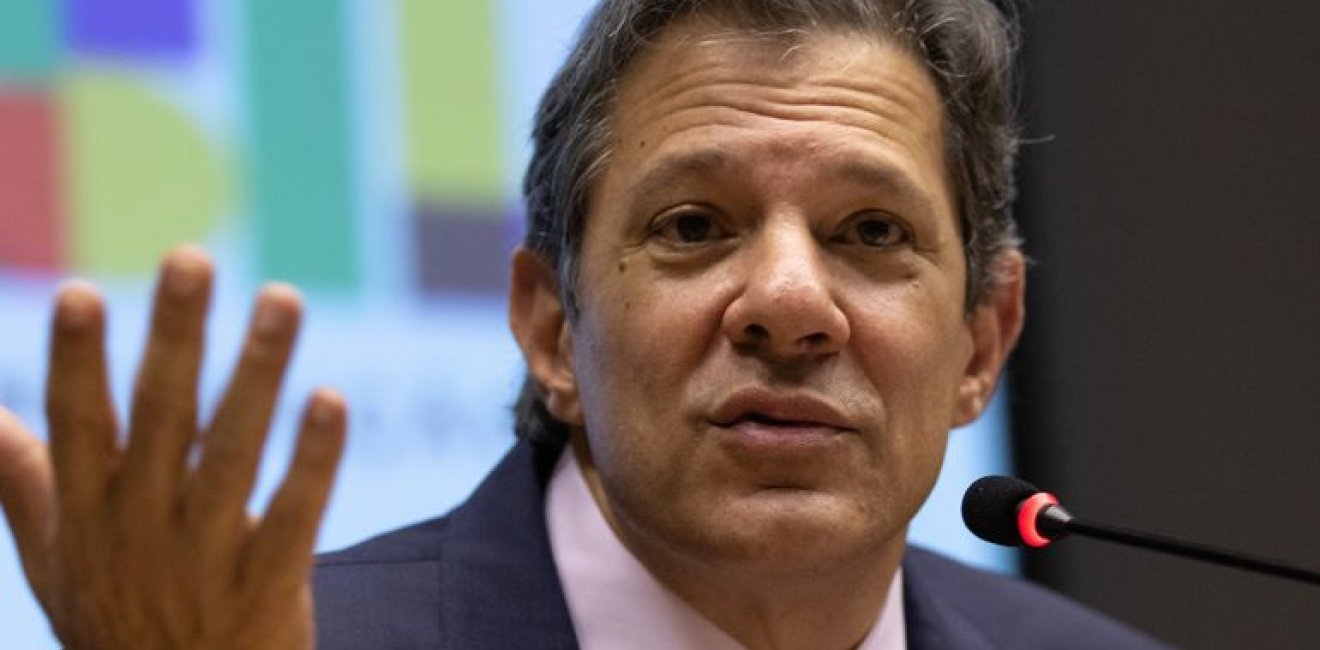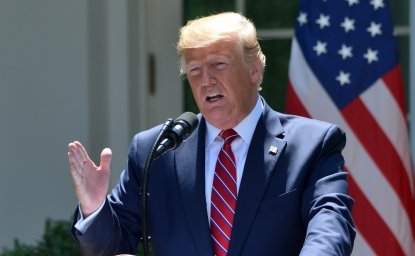Government Unveils Ambitious New Fiscal Framework
Although ambitious, the new fiscal rules presented by Finance Minister Fernando Haddad seek to avoid hindering investment in key areas such as health and education

A blog of the Brazil Institute
Although ambitious, the new fiscal rules presented by Finance Minister Fernando Haddad seek to avoid hindering investment in key areas such as health and education

After much anticipation, the Brazilian government has finally unveiled the first details of its proposal for a new fiscal framework to tame public spending and prevent the public debt from ballooning. The full text of the proposal is expected next week.
The new framework, if approved by Congress, will replace the rules put in place by a federal spending cap approved by the Michel Temer administration in 2016. The cap placed a hard limit on how much the government could increase its annual budget from one year to the next, only allowing it to rise in line with the official inflation rate.
The government now wants to establish a growth band of 0.6 to 2.5 percent for year-to-year primary expenditure until 2026. However, the national nursing minimum wage passed last year and the Fundeb basic education fund will not count toward this cap band.
In many ways, the proposal built by Finance Minister Fernando Haddad tries to split the baby on the issue of limiting public spending. It embeds some counter-cyclical measures that allow the administration to make new investments — something the left badly wants — while at the same time committing the government to primary surpluses and debt containment, in a nod to the markets.
In general, the fiscal rule presented by Mr. Haddad states that federal government spending can only increase to 70 percent of revenue growth. However, investment in key areas such as health and education will be allowed to grow more, by up to 100 percent of revenue growth.
If the government fails to meet its primary surplus target in a given year, the following budget can only increase spending by up to 50 percent of revenue growth.
However, if the government overachieves its primary surplus target, it can use the extra money for investment. Mr. Haddad also unveiled the surplus goals for the remainder of President Luiz Inácio Lula da Silva's term:
"This is a credible rule, and the introduction of these bands will ensure that we meet our targets," said Planning Minister Simone Tebet.
"If we meet these targets, we will reach 2026 in a situation of stability. Indicators such as interest rates and inflation will ease," Mr. Haddad added. "This framework will help us build a solid fiscal outlook for Brazil."
Investor reaction has been positive. Brazil's main stock index and the Brazilian currency had a strong trading day on Thursday.
Mario Sergio Lima, a senior Brazil analyst at Medley Global Advisors and a columnist for The Brazilian Report, was less impressed. "It is certainly a step in the right direction, but an insufficient one. It doesn't put the public debt on a sustainable curve in the short term. Also, the government's ability to deliver results relies too much on revenue, which it doesn't control."
Some in Congress were concerned, too. "Party leaders have asked me if the plan will be tied to tax hikes. I want to make one thing clear: it is not our plan to create new taxes or hike current taxes," the finance minister said.
Mr. Haddad did, however, launch a dig at Brazil's regressive income tax system. "If those who are not paying their due taxes start paying them, the system will be more sustainable," he said, during the announcement of the fiscal anchor. "It is about rebuilding the tax base, not increasing it."
While this diagnosis is correct, it fails to acknowledge that it was under Workers' Party governments (especially under Dilma Rousseff, who served as president between 2011 and 2016) that sectoral tax breaks became more widespread.
The government showed optimism about the fiscal framework's chances of passage in Congress, predicting that it could be approved by the middle of the year. "The House has 513 members, and many of them are keen on dialogue, regardless of their party positions," said Institutional Relations Minister Alexandre Padilha.
"We have to look at the fine print, but the first details suggest that the new rule makes sense," said Senator Carlos Portinho, the opposition's whip in the Senate.
The new fiscal framework will be voted on as a supplementary law instead of a constitutional amendment, which significantly lowers the bar of votes needed. It requires a simple majority of seats in each chamber — 257 in the House and 41 in the Senate.
In the lower house, however, Speaker Arthur Lira has indicated his willingness to delay the bill until the government can whip the support of 308 congressional seats — that is, a constitutional majority.
Some political movements may help the government in this endeavor. This week, five centrist and center-right parties announced that they have joined forces to form the largest party bloc in the House, pledging to work as a loose association throughout the legislature. These parties control 142 of the House's 513 seats, more than a quarter of the chamber.
As we noted in our Brazil Daily newsletter today, the new "supergroup" is good news for the government, as the parties that make up the bloc are in favor of the administration's tax reform ideas.
In its inflation report, also released on Thursday, the Central Bank raised its projections not only for the country's GDP in 2023, but also for inflation.
While raising its growth expectations from 1 to 1.2 percent, given the better-than-expected performance of the services sector in last year's Q4, the monetary authority said that the probability of inflation remaining above the ceiling of 4.75 percent in 2023 rose from 57 to 83 percent. Short- and medium-term expectations for prices in the country are far from being anchored.
In a presentation moments before Mr. Haddad's press conference, the Central Bank's economic policy director, Diogo Abry Guillen, said inflation is above what is compatible with growth globally, hence the tightening cycle in the U.S. and the European Union, and there are no signs of deceleration.
Domestically, he said the expectations of inflation in Brazil are still high, stressing that whatever the reasons, this is an important channel for setting monetary policy, even more than the possible impact of the country's new fiscal framework.
Among the factors pushing inflation expectations up, Mr. Guillen cited the relative inertia of inflation in the previous year, mainly in the case of non-administered prices, imported inflation, and other factors such as one-off shocks to food prices, which remain relatively high.
The monetary authority also said that it doesn't see any risk of a credit crunch; that is, lending is not slowing down beyond what the monetary cycle forces it to — sending a message that the Central Bank also does not see greater risks in maintaining the monetary tightening for a longer period if inflation demands it.
Immediately after the presentation, and while Mr. Haddad was still explaining the new fiscal framework, Central Bank chairman Roberto Campos Neto spoke to the press. He reaffirmed what was in the minutes of the Monetary Policy Committee a day before, that the framework proposal will not automatically lead to a U-turn in the bank's recent hawkish stance. That would depend on a new fiscal rule being "credible" and "solid."
"We had access, a few weeks ago, to the first draft of the rule, but it still needed some polishing in parameters. We will evaluate the inflation trajectory after the new fiscal rule's implementation," Mr. Campos Neto said.
"[Finance] Minister Haddad has a big fight ahead of him; we recognize that. On our side, we are doing technical work with a short-term cost, but that cost would be greater if this work were not done."
Like the content? Subscribe to the Brazilian Report using the discount code 100DAYS to get 20 percent off any annual plan.

The Brazil Institute—the only country-specific policy institution focused on Brazil in Washington—aims to deepen understanding of Brazil’s complex landscape and strengthen relations between Brazilian and US institutions across all sectors. Read more


The Wilson Center’s prestigious Latin America Program provides non-partisan expertise to a broad community of decision makers in the United States and Latin America on critical policy issues facing the Hemisphere. The Program provides insightful and actionable research for policymakers, private sector leaders, journalists, and public intellectuals in the United States and Latin America. To bridge the gap between scholarship and policy action, it fosters new inquiry, sponsors high-level public and private meetings among multiple stakeholders, and explores policy options to improve outcomes for citizens throughout the Americas. Drawing on the Wilson Center’s strength as the nation’s key non-partisan policy forum, the Program serves as a trusted source of analysis and a vital point of contact between the worlds of scholarship and action. Read more



